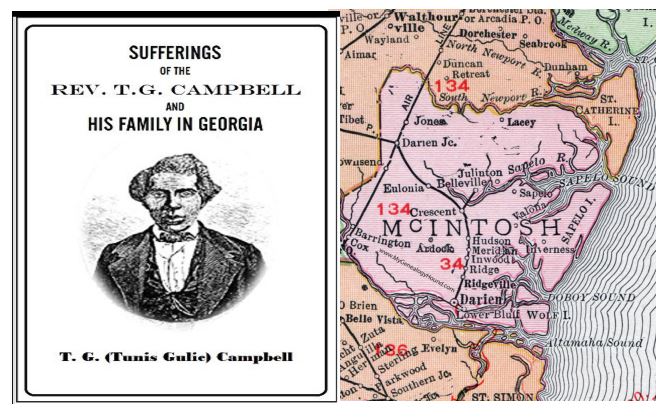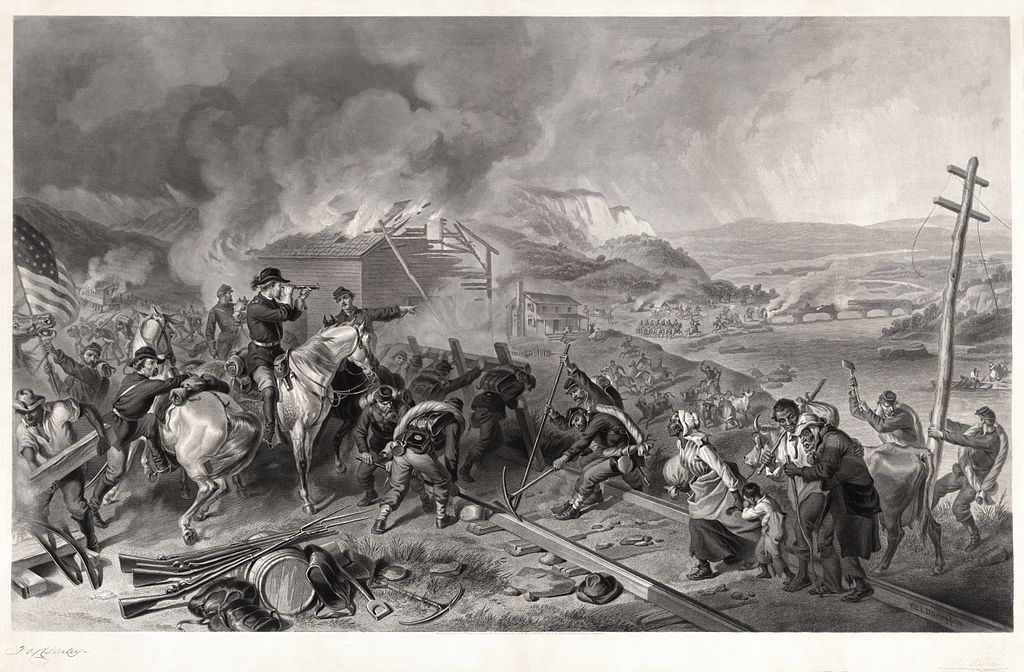Tunis G. Campbell, Sr. Georgia Black Reconstruction Leader By Jonathan Grant @Brambleman In 1861, a 49-year-old black abolitionist named Tunis G. Campbell, Sr., walked into a recruiter’s office in New York City and attempted to enlist in the Union Army. Like all African-Americans in the war’s early stages, he was rejected as unfit on the basis of his race. Campbell, a well-educated restaurateur, baker, and published author, didn’t give up. He wrote a letter to President Lincoln outlining a self-improvement plan for freed slaves after the war. As a result, he was sent to Union-occupied Hilton Head, S.C., to work with General Rufus Saxton. In 1865, Campbell—a tall, imposing man who dressed formally and wore spectacles—was appointed military governor of five Georgia…
Tag: Civil War
Take that, Scarlett O’Hara: The tale of Tunis Campbell is the true story of Georgia Reconstruction
Tunis G. Campbell, Sr. Georgia Black Reconstruction Leader By Jonathan Grant @Brambleman In 1861, a 49-year-old black abolitionist named Tunis G. Campbell, Sr., walked into a recruiter’s office in New York City and attempted to enlist in the Union Army. Like all African-Americans in the war’s early stages, he was rejected as unfit on the basis of his race. Campbell, a well-educated restaurateur, baker, and published author, didn’t give up. He wrote a letter to President Lincoln outlining a self-improvement plan for freed slaves after the war. As a result, he was sent to Union-occupied Hilton Head, S.C., to work with General Rufus Saxton. In 1865, Campbell—a tall, imposing man who dressed formally and wore spectacles—was appointed military governor of five Georgia…
Take that, Scarlett O’Hara: The tale of Tunis Campbell is the real story of Georgia Reconstruction
Tunis G. Campbell, Sr. Georgia Black Reconstruction Leader By Jonathan Grant @Brambleman In 1861, a 49-year-old black abolitionist named Tunis G. Campbell, Sr., walked into a recruiter’s office in New York City and attempted to enlist in the Union Army. Like all African-Americans in the war’s early stages, he was rejected as unfit on the basis of his race. Campbell, a well-educated restaurateur, baker, and published author, didn’t give up. He wrote a letter to President Lincoln outlining a self-improvement plan for freed slaves after the war. As a result, he was sent to Union-occupied Hilton Head, S.C., to work with General Rufus Saxton. In 1865, Campbell—a tall, imposing man who dressed formally and wore spectacles—was appointed military governor of five Georgia…
The Civil War and Reconstruction in Georgia, Part 1
Above: Sherman’s March to the Sea (Savannah Campaign), 1864 This post is excerpted from The Way It Was in the South: The Black Expericience in Georgia by Donald L. Grant and Jonathan Grant (University of Georgia Press, 2001). All rights reserved. Publishing to critical acclaim, The Way It Was in the South: The Black Experience in Georgia was an American Heritage Editors’ Choice selection and also won Georgia’s “Author of the Year” honors for Dr. Grant. About the Author: Donald Grant (1919?88) received his Ph.D. degree from the University of Missouri and was professor of history at Fort Valley State College (now University) in Middle Georgia. He was also the author of The Anti?Lynching Movement: 1883-1932. And how this book came to be published after my…



